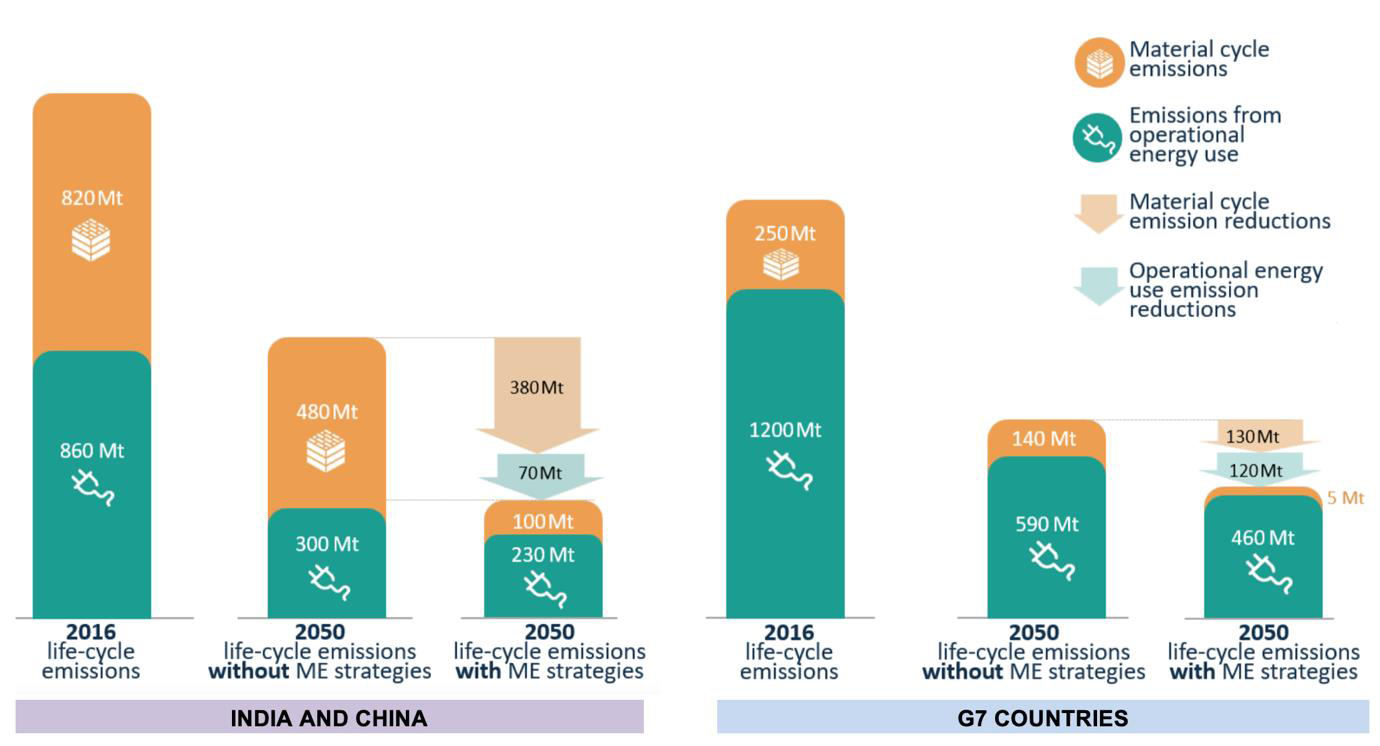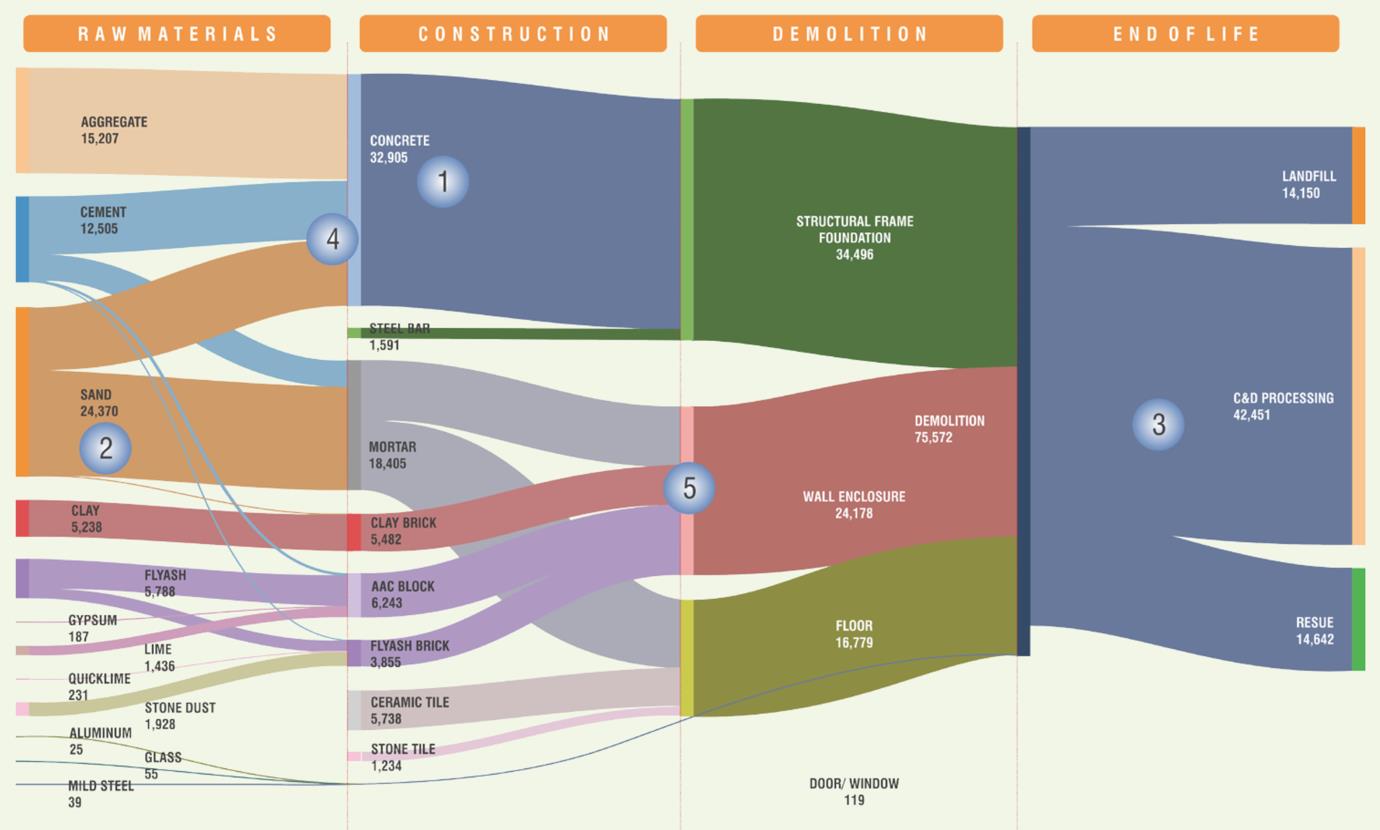|
Innovative Policies in Material Efficiency for
As our cities grow and try to cope with increasing demands for resources and services, new models and systems are emerging to tackle issues of resource circularity and material efficiency. In its 2020 report on ‘Resource Efficiency and Climate Change – Material Efficiency Strategies for a Low-Carbon Future’, the International Resource Panel describes the vast potential of material efficiency strategies towards climate change mitigation, especially with respect to developing countries where majority of the urban growth is predicted to take place in the coming decades. In the built environment, the report projects that material efficiency strategies can help reduce up to 60-70% of life-cycle emissions from homes in India and China by 2050, compared to a potential reduction of 35-40% in G7 countries (Figure 1). To achieve this, it is imperative for innovative policies to evolve to a multi-stakeholder perspective covering the complete supply chain of the housing industry. While most current material-related policies consider end-of-life landfill diversion as their major focus, strategies must be developed for the planning, use and design phases as well.
Figure 1 There Some basic strategies towards this include material substitution in buildings along with using less material by design wherever possible. Intensity of use of material can also be reduced through efficient design and production using tools like building information modelling (BIM) and space-efficient, flexible designs using modular and prefabricated components. Additionally, technological development is needed to enhance end-of-life recovery and reuse potential of materials along with improving fabrication yields and product lifetimes. From a policy perspective, strategies may include:
For improved city-level decision making towards material use strategies, a comprehensive understanding of resource requirements can be developed using tools such as Life Cycle Assessment (LCA) and Material Flow Assessment (MFA). Under the EU-REI project, DA has helped conduct such assessments in the construction sector for Ahmedabad and Bhubaneswar where the housing sector is projected to add up to 70 million sqm and 40 million sqm of built space, respectively, between 2020 and 2030. See Figure 2 for an example of a Sankey diagram of material flow for housing in Ahmedabad for projects during 2014-2019 with a built up area of 32.75 million sqm.
Figure 2 It was estimated that materials with a gross weight of 2-2.5 tonnes flow to every sqm of residential built space with an overall carbon footprint to the tune of 0.6-0.8 tonne CO2 equivalent emissions per sqm. Concrete was found to have the highest intensity of use, accounting for about 40% of both material weightage as well as carbon emissions. With respect to primary material usage, highest quantum of material flow was for sand, mostly used in concrete mixes, at about 30-35% of total usage, while cement (50%) and steel (12%) were the biggest contributors to emissions. Additionally, the research also looked at the quantum of secondary resource utilisation including construction and demolition waste, and industrial waste such as fly ash, along with identifying priority areas for policy action. ■
Mohak Gupta
|

